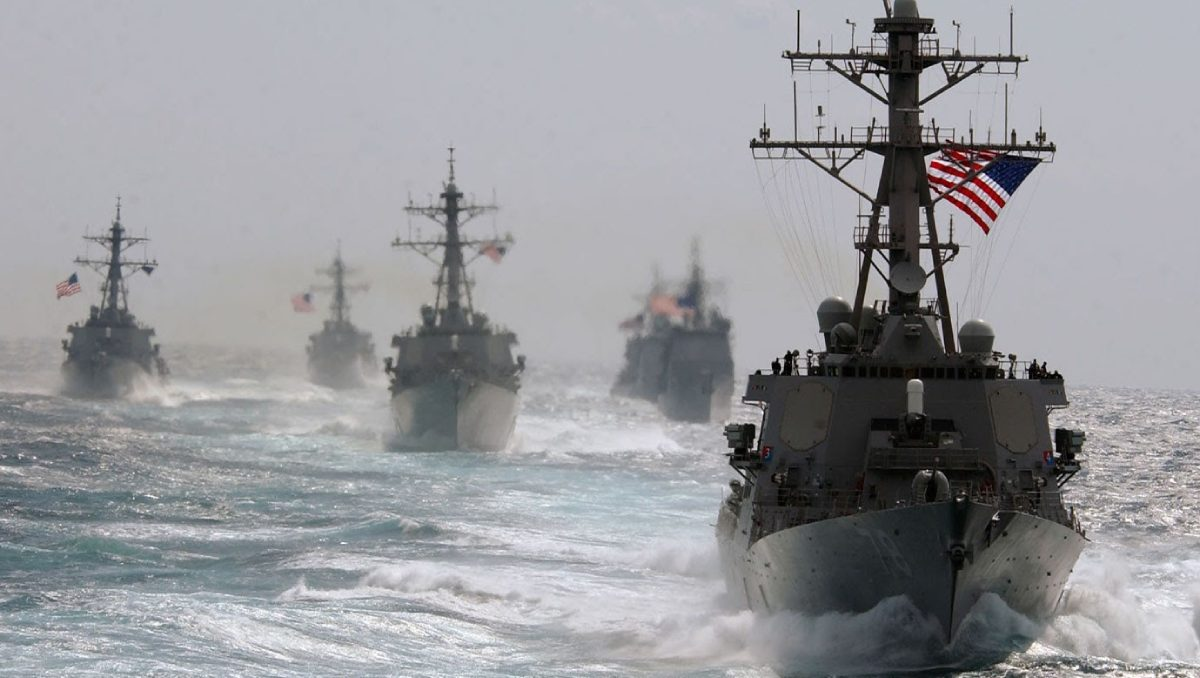
A joint Russian-Chinese flotilla sailed toward the Northern Pacific Ocean, raising concerns in the United States, which responded by deploying two warships and army units to the region. The naval maneuvers, conducted as part of the ongoing Russian-Chinese “Northern/Interaction-2024” exercise, have sparked heightened geopolitical tension in the North Pacific.
Joint Naval Exercise and US Response
According to the Japanese Defense Ministry, nine Russian and Chinese warships transited the La Perouse Strait (also known as the Soya Strait), moving eastward from the Sea of Japan to the Sea of Okhotsk. The flotilla is expected to sail further east, passing through Russia’s Kuril Islands and potentially reaching the vicinity of Alaska’s Aleutian Islands.
In response to this activity, the United States Navy deployed the cruiser USS Lake Erie to the Northern Pacific Ocean and the destroyer USS Sterett to the Aleutian Islands. The Lake Erie, homeported in San Diego, California, has been conducting homeland defense operations in the region since September 18th. The Sterett, also based in San Diego, departed on September 2nd for patrols in the Bering Sea and has been engaged in homeland defense operations in the Aleutian Islands since mooring at Dutch Harbor on Amaknak Island on September 13th and 18th.
Russia and China: Joint Exercises and Military Cooperation
The Russian-Chinese “Northern/Interaction-2024” exercise, which began its second phase recently, involves many warships from both countries. China’s Northern Theater Command deployed destroyers Wuxi and Xining, frigate Linyi, and replenishment ship Taihu to the exercise. Russia’s Pacific Fleet contributed destroyers Admiral Panteleyev and Admiral Tributs, along with corvettes MPK-107 and MPK-82. All eight warships departed Vladivostok, a major port in the Russian Far East, for the exercises.
This joint naval activity is just the latest example of growing military cooperation between Russia and China. The two countries have conducted four previous joint patrols in the Pacific Ocean since 2021, most recently in July in the Western Pacific. In August 2023, eleven Russian and Chinese warships approached the Aleutian Islands during a combined naval patrol, prompting the deployment of four American destroyers and P-8 Poseidon maritime patrol aircraft.
Increased Military Presence Near Alaska
The increased presence of Russian and Chinese military forces in the air and waters around Alaska has raised concerns in the United States. In July 2023, four Russian bombers entered the Alaska air defense zone, prompting the scrambling of U.S. and Canadian fighter jets to intercept them. From September 11th to 15th, four groups of Russian military aircraft flew within the Alaska air defense zone during Russia’s strategic exercise Ocean-2024. On September 15th, four Russian naval vessels, including two nuclear-powered submarines, operated in the Chukchi Sea near Alaska, transited into U.S. economic waters to avoid sea ice on the Russian side of the Maritime Boundary Line.
In addition to naval cooperation, Russia and China have conducted a joint coast guard exercise and patrol mission near Vladivostok and in the Northern Pacific Ocean since September 16th. This ongoing military cooperation raises questions about the strategic intentions of both countries and the potential impact on regional stability in the North Pacific.
US Response and Concerns
The US deployments of warships and army units to Alaska, coupled with the interception of Russian aircraft and the tracking of Russian and Chinese naval vessels, represent a clear response to the increased military activity in the region. The US has repeatedly expressed concerns about the growing strategic partnership between Russia and China, which it sees as a challenge to its interests in the region.
The US military presence in the North Pacific remains a significant deterrent, but the escalating joint activities of Russia and China underscore the growing complexities of the geopolitical landscape in the region. As the joint Russian-Chinese flotilla sails towards the Northern Pacific, the international community will be closely watching developments in the area, seeking to understand the strategic implications of these naval maneuvers and their impact on the future of security in the North Pacific.
